WITH THE VALIDATION OF THE DEVELOPED SOLUTIONS THE COMBILASER PROJECT COMES TO A SUCCESSFUL CONCLUSION
INTRODUCTION
The three-year long COMBILASER European research project which focused on development of advanced laser welding and laser cladding processes that combine monitoring and NDT technologies with a Self-Learning System algorithm, has ended. In December the industrial partners tested the developed solutions in industrial environment trials, assessing the viability and practicality of the developed solutions.
The developed solutions were studied in the 3 different use cases and facilities:
- Hidria AET (HAET) automotive industry use-case, applied in Tolmin, Slovenia
- Orkli (ORK) white/capital goods industry use-case, applied in Ordizia, Spain
- TMCOMAS (TMC) oil and gas industry use-case, applied in Blanes, Spain
The COMBILASER consortium has had a very intensive final project year. The COMBILASER consortium held two consortium meetings in third project year. The first consortium meeting was held on 9th and 10th May 2017 at Mondragon Assembly premises in Orange, Provence, France and the second at IK4 LORTEK facilities in Gipuzkoa/Ordizia, Basque Country, Spain on 4th and 5th December 2017.
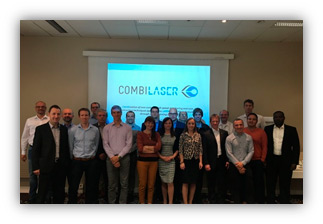
Orange consortium meeting,
9th-10th May
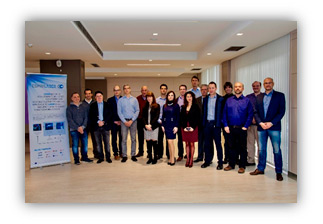
Ordizia consortium meeting,
4th – 5h December
NEW PUBLICATIONS AND MARKETING ACTIVITIES
In addition to intensive work being done in the field of COMBILASER solution implementation and validation in real industrial environment, the COMBILASER consortium also took care of intensive dissemination reaching-out. In 2017 the COMBILASER project published its project video available on Youtube since July 2017.
VALIDATION PROCESS AND MAIN FEATURES OF THE DEVELOPED SOLUTIONS
Prior to the final industrial validation, the COMBILASER consortium provided laboratory scale tests for the developed systems and solutions. After the final setups for each separate use-case have been validated and their operability confirmed, they were transferred to the respective industrial partners. Lab-scale tests for Hidria AET use-case were carried out at Laser Zentrum Hannover facilities, whereas both Orkli and TMComas cases were performed at IK4-LORTEK facilities.
The main feature of the developed solutions is the Self-Learning System (SLS). The completely from-scratch developed algorithm developed by University of Sheffield has shown great potential in numerous ways:
- as a machine learning tool,
- as an information input tool,
- as a process optimization tool.
The SLS was also tested in combination of numerous NDT technologies such as Laser Ultrasound, Acoustic Emission, Post-Welding inspection. Their compatibility with the developed SLS was thoroughly tested as well and HAS shown significant potential.
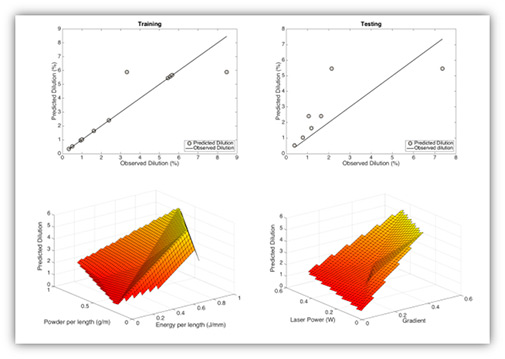
SLS – Training and testing accuracy using a single model of the RBF Neural Network
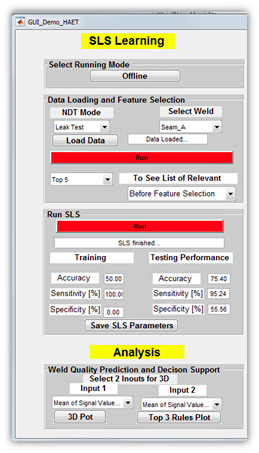
SLS – Graphical User Interface
VALIDATED INDUSTRIAL SOLUTIONS FOR EACH UC
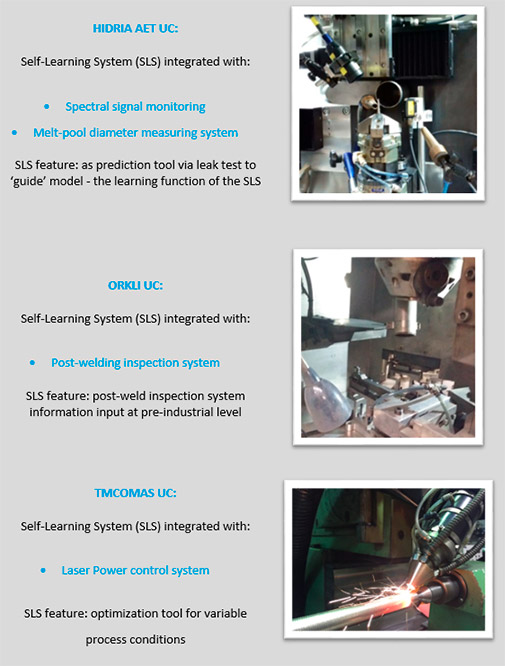
CONCLUDING REMARKS
The conclusion of the validation stage also marks the successful end of the COMBILASER project. The partners are now preparing for their final project review meeting by the European Commission, which is scheduled to take place in Brussels in February. Experience and knowledge gained throughout the COMBILASER project, as well as information exchange with other similar projects funded under the Horizon 2020 Programme, provides much incentive for the project partners to seek further cooperation. First talks in this direction have already taken part and the COMBILASER consortium is firmly convinced that the established partnerships and mutual trust among partners both form a solid base for further cooperation activities; bilateral, within H2020 or the upcoming FP9 research perspective.
